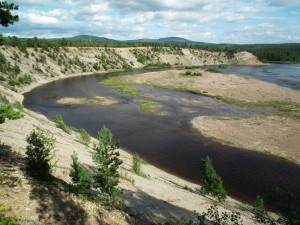Happy New Year-2014, on this first day of the year.
Happy New Year 2014, what would be a better way to welcome and remember the New Year than with a new website launch. So here it is, fresh, brand new WordPress blog website for 2014.
The content for this website Lapland Guide.net will unfold as the year unfolds. The geographical area that we cover with information is the Fennoscandia belt region.
VIDEO.
Starting with the early history, that begins as the Ice Age thaws and becomes more fruitful and accessible for the early pioneers to explore the fertile lands that surface from the big freeze of the northern environment. There are antiquity findings, that have been unearthed and discovered that date back as far as 6000 BC. Stone art, cave paintings, and regional hubs that the early nomadic and indigenous settlers made their homes and left markings and remains of the Stone Age. Deep pits that were dug into the ground that was made to trap wild reindeer and provide food for the Nomads, clans, and tribes. Stone tools were made by chipping and grinding of stones to make hand axes, ax heads, fish net sinkers, and cutting edge tools for cutting and skinning the wild animal and butchering their valuable meat.

Fennoscandia was a land with rich natural food resources. Food was available from the many lakes, rivers, creeks and the North Seas. In the early days, the food supply would not dwindle, there was more than enough for the nomadic indigenous peoples to live on and to secure their food supply from year to year.
Harsh winters would drive the people of the north further south to more temperate temperatures in comparison, but nomadic travel was not a problem when there were a few peoples in the areas and confrontations unlikely. As the populations increased in the south, the indigenous peoples of the North were crowded out of the permanent settlers of the south areas and avoided going there between seasons as the populations grew denser.
The Nomadic Sami peoples and the “Nordic Laplander s” as permanent settlers in the far north of Norway, Sweden, and Finland were required to pay taxes to the King of Sweden, on the west of the Russian border. Those on the east side were required to pay taxes to the Czar of Russia. At times, they were required to pay taxes to both sides as the concept if borders were a foreign concept to the traditional Nomadic peoples of the far North. That would have some time in history traveled along the Fennoscandian belt along the Siberian coastline.
Taxes were paid with things that had value, valuable things were; preserved fish, squirrel pelts, reindeer and moose hides, beaver and fox skins, bear and also game birds were very valuable that were used to pay taxes to the government. The problems arose when the population grew as more migrated to the North, animals were hunted out, so there was not enough game to hunt and pay the taxes, that is what forces the Sami nomadic peoples to start farming reindeer in large herds, and it did not happen until the late 18 century.
The Fennoscandia is not alone with other parts of the world where the indigenous peoples were encroached by foreigners and forced to move away from their traditional fishing and hunting grounds. They were a minority when confronted by the violent military forces of the people from the south. Some survived and lived with dignity, others lost their identity and the traditional meaning and purpose for life. The traditional Nomadic identity that is closely knitted to the land and the seasons of the planet is violently disrupted by the act of being robbed of the traditionally inherited culture and land.
Happy New Year 2014.
